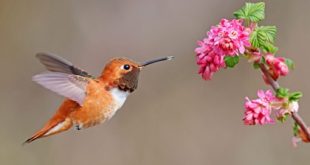Chickens, particularly hens, are fascinating birds with unique anatomy perfectly suited to their lifestyle. Each body part plays a crucial role in their survival, reproduction, and overall health. Understanding the various body parts and their functions can provide valuable insights for poultry farmers, hobbyists, and animal enthusiasts.
A Body Parts Of Hen

1. Head
- Beak: The beak of a hen is a multi-functional tool. It is primarily used for pecking at food, drinking water, and grooming feathers. The sharp tip of the beak helps hens pick up small grains, insects, and other food items.
- Eyes: Hens have excellent eyesight, with eyes located on the sides of their head, giving them a wide field of view. Their eyes are adept at detecting movement, which helps them spot predators and locate food.
- Comb: The comb is the red, fleshy growth on top of a hen’s head. It plays a role in thermoregulation, helping hens maintain their body temperature by releasing excess heat. The comb’s size and color can also indicate the health and reproductive status of the hen.
- Wattles: The wattles are the fleshy lobes that dangle under the beak. Like the comb, wattles assist in thermoregulation and play a role in attracting mates by signaling the hen’s health.
2. Neck
The neck supports the hen’s head and allows for a wide range of motion, enabling them to peck, forage, and scan their surroundings for predators. The muscles in the neck are strong and flexible, aiding in preening and feeding.
3. Body
- Feathers: Feathers provide insulation, protecting hens from extreme temperatures. They also enable limited flight and play a role in communication and mating displays. Preening helps keep feathers clean and waterproof.
- Skin: Beneath the feathers, the hen’s skin serves as a protective barrier against infections and external injuries. It also contains oil glands that aid in maintaining feather health.
- Breast: The breast area contains strong muscles used for wing movement during flight or flapping. This part of the body is also a primary source of meat in commercial poultry production.
- Back: The back supports the wings and provides structural strength. It’s covered in feathers, which often exhibit unique patterns and colors depending on the breed.
4. Wings
Though hens are not strong fliers, their wings are essential for short bursts of flight, which help them escape predators or navigate obstacles. Wings also play a role in balance and communication, as hens sometimes use them in displays of dominance or courtship.
5. Legs and Feet
- Legs: The hen’s legs are sturdy and strong, enabling them to walk, run, and scratch the ground for food. The leg bones and muscles are adapted for both movement and stability.
- Feet and Claws: Hens have scaly feet with three forward-facing toes and one backward-facing toe. The claws are used for scratching the ground to uncover insects, seeds, and other food sources. The structure of the feet also provides balance and grip.
6. Tail
The tail feathers help hens maintain balance while walking or running. They also play a role in communication, as tail movements can indicate mood or intentions. In roosters, the tail feathers are more prominent and are often used in courtship displays.
7. Digestive System
- Beak and Tongue: The beak starts the digestion process by breaking food into smaller pieces, while the tongue helps in swallowing.
- Crop: The crop is a pouch located at the base of the neck where food is temporarily stored. It allows hens to eat quickly and digest food later.
- Proventriculus: This is the glandular stomach where food is mixed with digestive enzymes and acids.
- Gizzard: The gizzard is a muscular organ that grinds food into smaller pieces using ingested grit. It is essential for breaking down hard grains and seeds.
- Intestines: The small intestine absorbs nutrients, while the large intestine processes waste. The ceca, two blind pouches, aid in the fermentation of undigested food.
- Cloaca: The cloaca is a multi-functional opening used for excretion and laying eggs.
8. Reproductive System
Hens have a single functional ovary and oviduct. The ovary releases eggs, which travel down the oviduct, where they are fertilized (if a rooster is present) and encased in a shell before being laid. Each section of the oviduct has a specific role in forming the egg:
- Infundibulum: Captures the yolk released by the ovary.
- Magnum: Adds egg white (albumen).
- Isthmus: Forms the shell membrane.
- Uterus (Shell Gland): Deposits the hard shell.
- Vagina: Lays the egg.
9. Respiratory System
The hen’s respiratory system includes nostrils, a trachea, air sacs, and lungs. Unlike mammals, hens have a unique system of air sacs that allow for efficient oxygen exchange. This system helps them maintain high energy levels for activities like laying eggs and short bursts of flight.
10. Circulatory System
The hen’s heart and blood vessels circulate oxygen, nutrients, and hormones throughout the body. The circulatory system also helps regulate body temperature and remove waste products.
11. Nervous System
Hens have a well-developed nervous system that controls their movements, senses, and behavior. Their brain processes information quickly, helping them respond to environmental changes and potential threats.
12. Ears
Hens have small, hidden ears located on the sides of their head. Despite their size, their ears provide excellent hearing, enabling them to detect predators or communicate with other hens through vocalizations.
13. Vocal Organs
The syrinx, located at the base of the trachea, allows hens to produce various sounds. These vocalizations include clucking, squawking, and crowing, which serve purposes such as warning of danger, signaling distress, or communicating with chicks.
Conclusion
Each body part of a hen is perfectly adapted to its role, contributing to the bird’s survival, reproduction, and ability to interact with its environment. By understanding these parts and their functions, we can better care for hens, ensuring their health and well-being. Whether you’re a poultry farmer, backyard chicken keeper, or animal enthusiast, appreciating the intricate anatomy of hens can deepen your connection to these remarkable birds.


